 |
 |
 |
| |
Colonic microbiota exhibits disparate associations
with HIV infection and sexual practices
|
| |
| |
21st International Workshop n Co-morbidities and Adverse Drug Reactions in HIV
Nov 5-6 2019 Basel
Reported by Jules Levin
E Verheij1,2, O Sortino3,4, I Vujkovic‑Cvijin5, J Sklar5, FW Wit1,6, NA Kootstra1,7, J Brenchley4, J Ananworanich2,8,9, Y Belkaid5, M Schim van der Loeff10, P Reiss1,2,6, I Sereti4, the AGEhIV Cohort Study Group
1Amsterdam University Medical Centers, University of Amsterdam, Department of Global Health and Division of Infectious Diseases, Amsterdam Infection and Immunity Institute and Amsterdam Public Health Research Institute, Amsterdam, the Netherlands;
2Amsterdam Institute for Global Health and Development, Amsterdam, the Netherlands;
3Clinical Monitoring Research Program Directorate, Frederick National Laboratory for Cancer Research sponsored by the National Cancer Institute;
4National Institute of Allergy and Infectious Diseases (NIAID), National Institutes of Health (NIH), Bethesda, MD, USA;
5MetaorganismImmunity Section, National Institute of Allergy and Infectious Diseases, National Institutes of Health, Bethesda, MD, USA;
6HIV Monitoring Foundation, Amsterdam, the Netherlands;
7Amsterdam University Medical Centers, University of Amsterdam, Department of Experimental Immunology, Amsterdam Infection and Immunity Institute, Amsterdam, the Netherlands;
8The Henry M. Jackson Foundation for the Advancement of Military Medicine, Bethesda, MD, USA;
9United States Military HIV Research Program; Walter Reed Army Institute of Research, Silver Spring, MD, USA;
10Public Health Service of Amsterdam, Department of Infectious Diseases, Amsterdam, the Netherlands
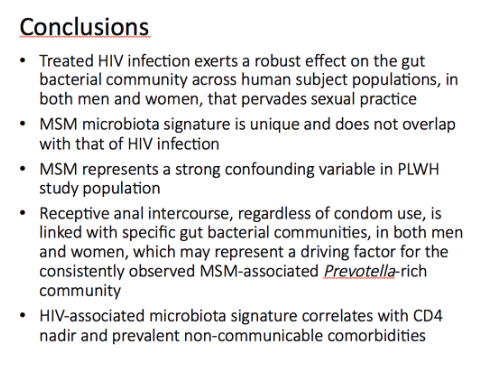
Objective: Effective antiretroviral therapy (ART) has prolonged survival and shifted the morbidity spectrum for people living with HIV (PLWH) from AIDS-associated opportunistic infections and malignancies towards age-associated non-communicable comorbidities (AANCCs), with these being more prevalent in PLWH compared with in age-matched HIV-uninfected individuals. A key contributor to the current disease spectrum includes HIV-associated inflammation and immune activation, the aetiology of which in PLWH remains incompletely defined. Gut microbial dysbiosis is thought to be a potential important contributor, but data thus far are conflicting regarding the role that lifestyle factors, including sexual orientation and behaviour, and HIV-infection itself have on gut microbial dysbiosis.
Methods: Using 16S rRNA gene sequencing, we profiled the microbiota from fecal samples of PLWH with suppressed viraemia on ART and HIV-uninfected controls participating in the AGEhIV Cohort Study. PLWH were selected to include 40 men having sex with men (MSM),
20 men having sex with women (MSW) and 20 females (F) matched 1:1 by age, sex, sexual orientation, BMI, birth country and smoking status with HIV-uninfected controls.
Results: HIV-infection was associated with alterations in the gut microbiota including an enrichment in Enterobacteriaceae and Desulfovibrionaceae members and a depletion of short chain fatty acids-producing bacteria such as Lachnospiraceae and Ruminococcaceae. Furthermore,
comparisons between MSM and non-MSM males revealed a unique MSM-associated micro biome signature characterized by an enrichment particularly in Prevotellaceae members (Figure 1), which was independent of HIV-infection. Finally, practicing receptive anal intercourse, regardless of condom use, was linked to a specific bacterial community variance independently of sex, which may explain the Prevotella-rich microbiome in MSM.
Conclusions: Our data provide unique evidence that colonic microbiota exhibit disparate associations with HIV-infection and sexual practices.
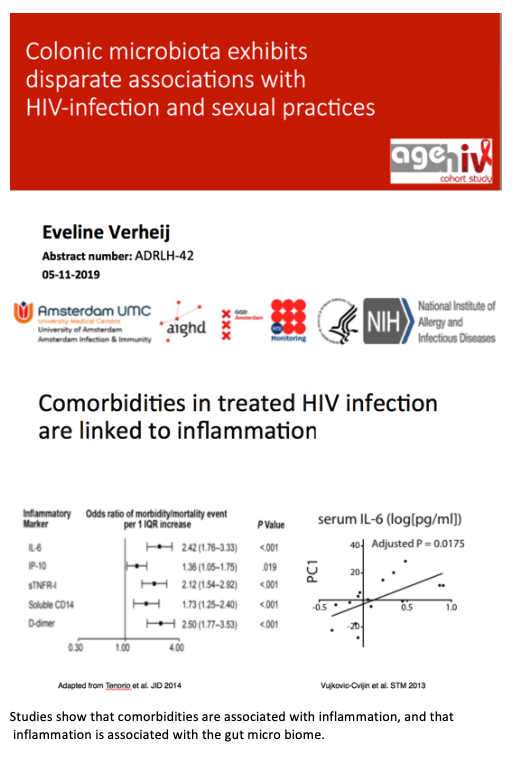
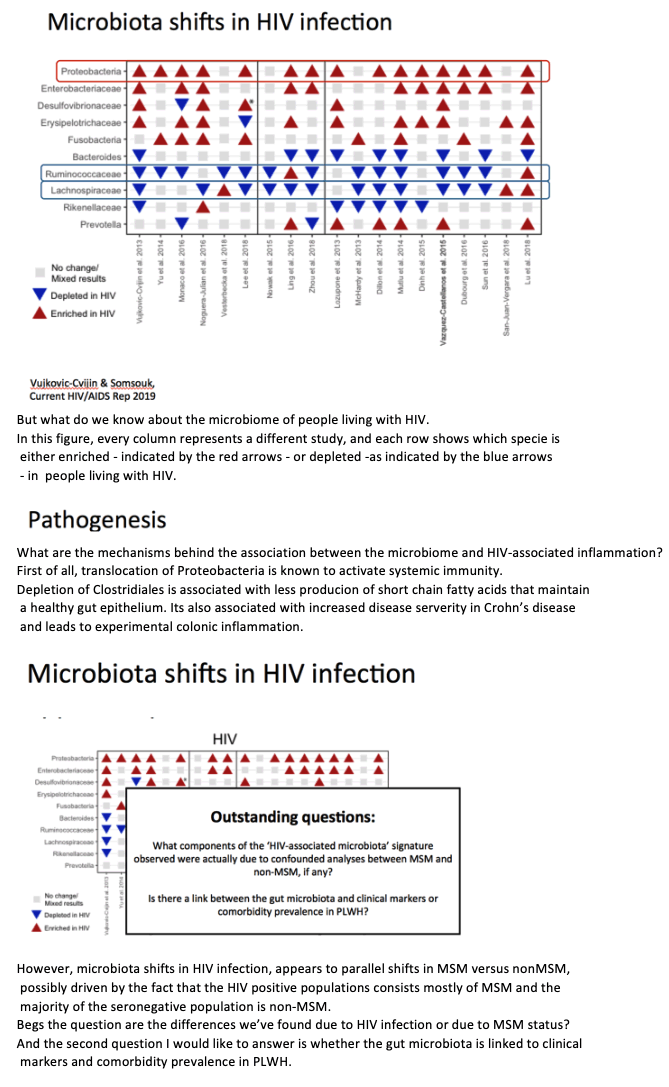
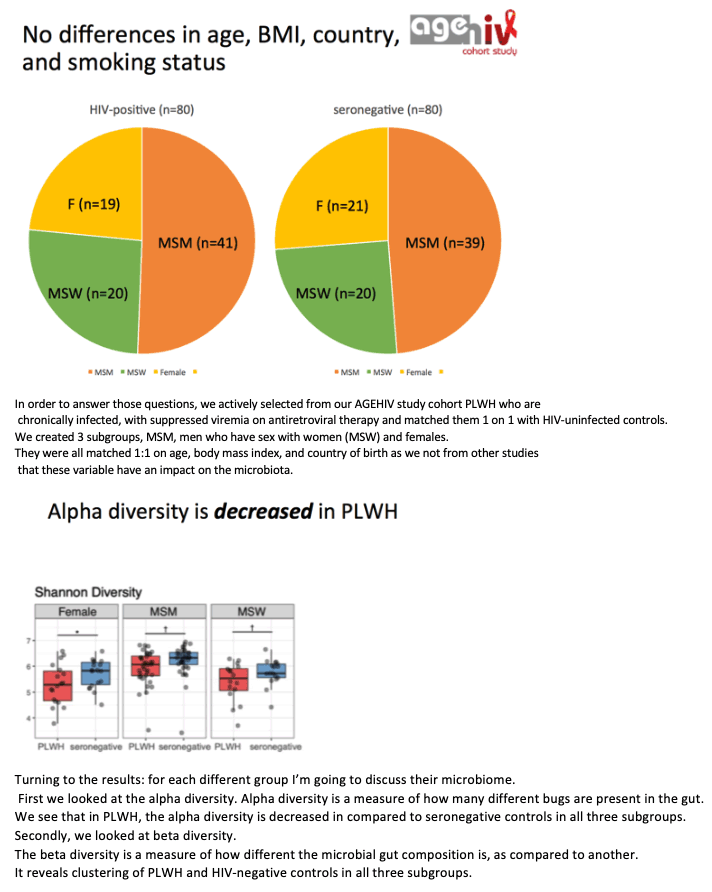
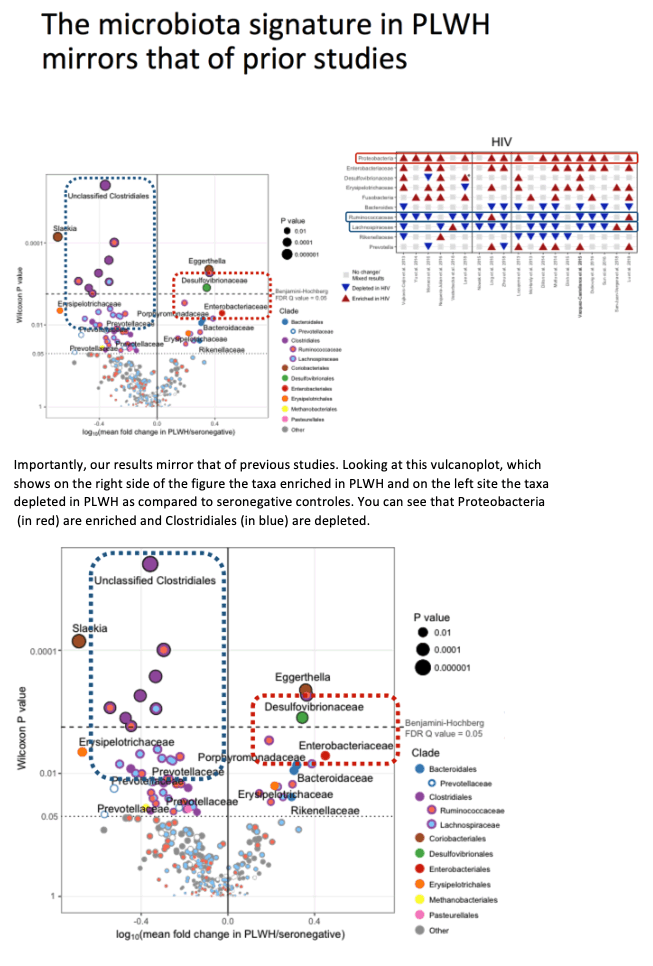
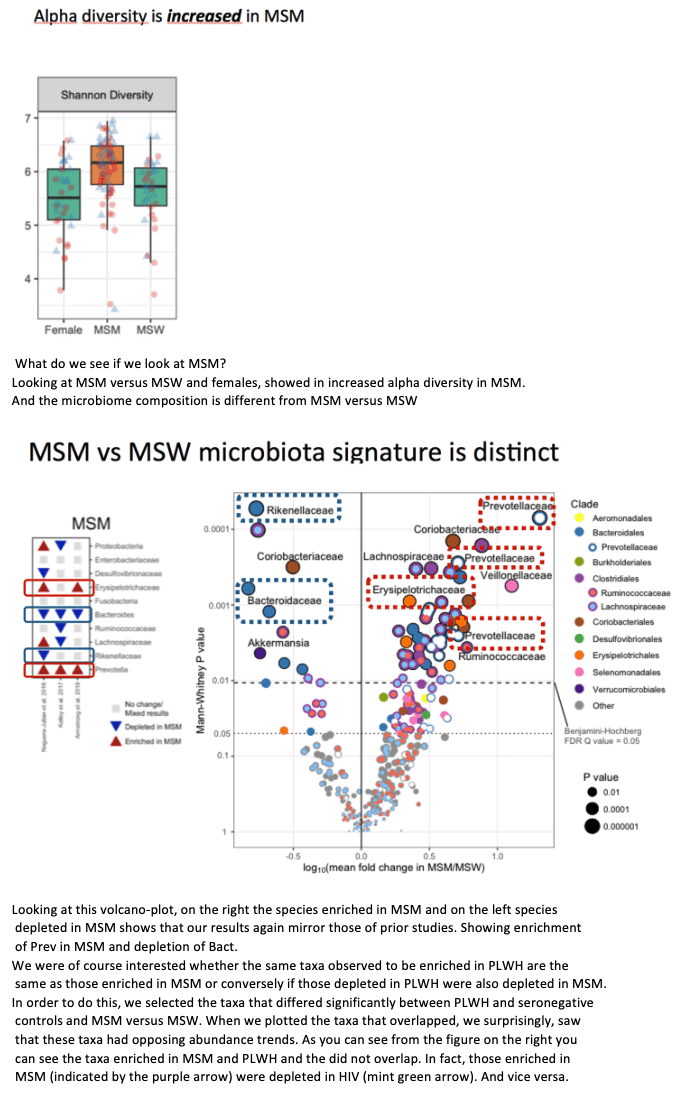
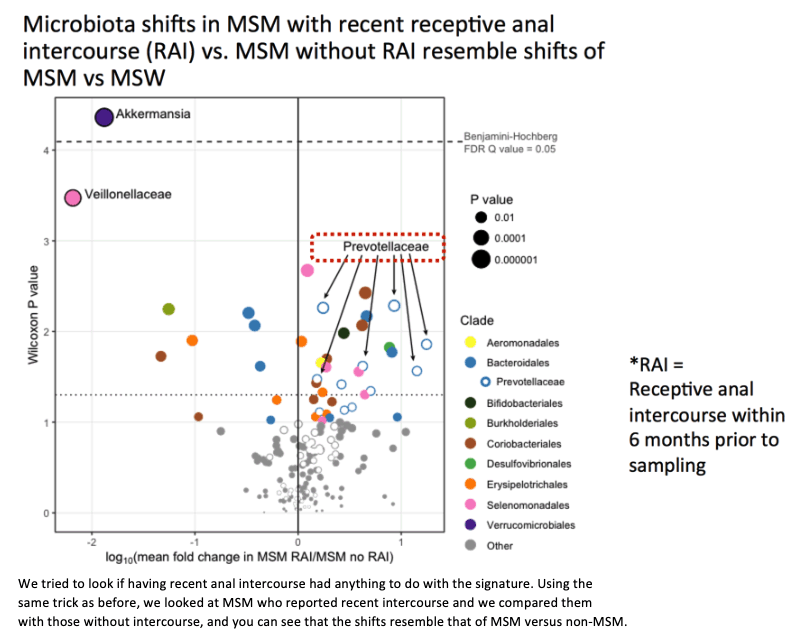
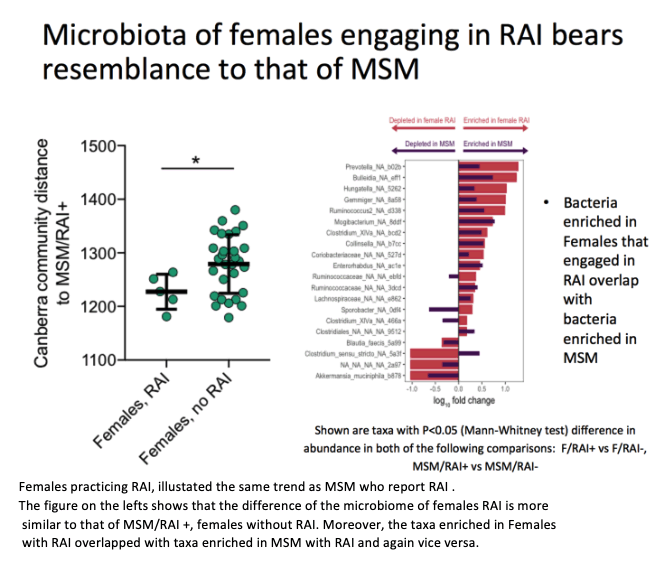
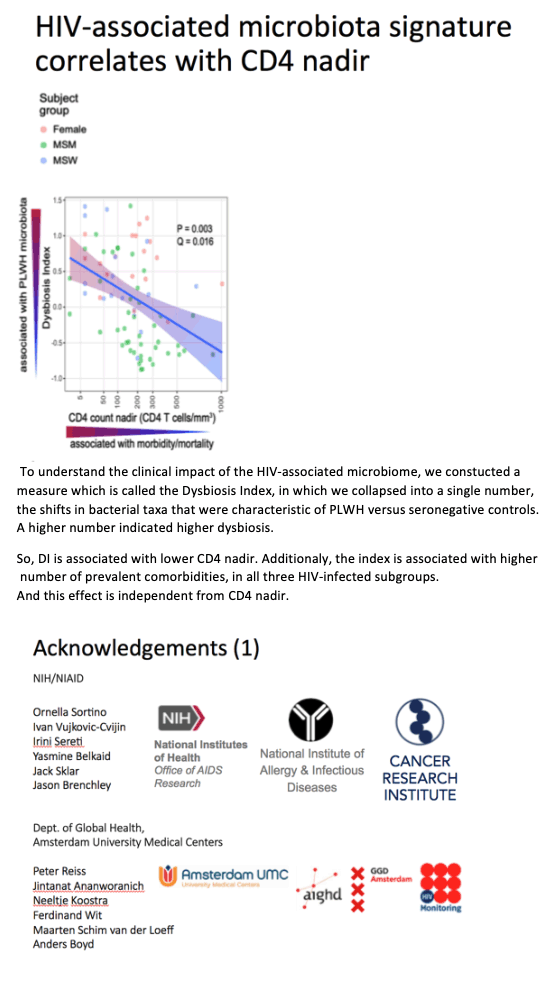
|
| |
|
 |
 |
|
|